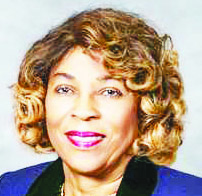
Legislation to Address – Shortage of School Nurses in the Works

CHARLOTTE, NC – There is a growing need for nurses in North Carolina’s public schools. In an attempt to address this problem, members of the Joint Legislative Program Evaluation Oversight Committee have drafted legislation that will likely be introduced during the short session in May.
According to a state legislative staff report, the state needs between $45 million and $79 million annually to meet the recommended school nurse-to-student ratio of one nurse for every 750 students. Currently, 76 percent of medication is given to students by non-nurses, such as teacher assistants, secretaries, and principals. From 2002 to 2015, there has been a 75 percent increase in students with chronic health conditions, such as asthma, diabetes, and food allergies. In the 2015-16 School Year, 1,318 nurses statewide served 2,313 students; Charlotte-Mecklenburg Schools had a student population of 145,444, with one nurse per 889 students.
The proposed legislation would direct the State Board of Education to recommend new school nurse staffing standards and develop an implementation plan to consolidate school nurse funding. The legislation would also require the Department of Health and Human Services to examine Medicaid rates and establish Medicaid reimbursement for school-based nursing services.
“I think the proposal concerning school nurses includes recommendations that will benefit public schools in North Carolina to acquire and maintain the recommended one nurse per 750 student ratio,” said Senator Joyce Waddell.
The Joint Legislative Study Committee on the Division of Local School Administrative Units, tasked with studying the effects of splitting school districts in North Carolina, concluded its work on Wednesday by approving the draft report. Since February, the committee members heard from school district leaders, education researchers, and school policy analysts about the potential challenges to dividing large school districts. The report found a lack of evidence correlating the size of a district and student academic performance. Presentations by several local educational agencies documented improvements in student outcomes through innovative programs, such as operating outside of additional traditional hours; customizing education offerings to meet students where they are; and measuring student progress in innovative ways. The report recommends further study on the issue before new implementation.